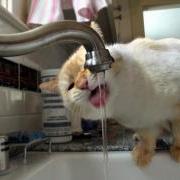

Regarding [#Pet Name], here is some information about [#Title]
Description:
Two primary renal (kidney) functions are:
CRF results in the inability to effectively perform these tasks. In effect, pets affected with CRF become poisoned by the build up of these waste products. CRF is a terminal disease.

Causes:
Contributing causes:
Symptoms:
Most CRF affected pets will show some combination of the following symptoms:
Diagnosis:
Several diseases may show similar symptoms. Diagnostic tests to verify CRF are Blood test and Urinalysis.
Typical findings on blood test are an elevated Blood Urea Nitrogen (BUN) and an elevated Creatinine and Phosphorous.
Urinalysis will typically show dilute urine.
Radiographs or Ultrasound imaging can assist in determining progression or other complicating factors.
Treatment:
Dialysis and kidney transplantation are rarely chosen because cost, availability and quality of life issues prevail.
Treatment is typically geared to helping the pet keep blood waste products (BUN) levels down. This is accomplished through a combination of proper (low protein) diet, medication and diuresis (fluid therapy). Many pet owners are instructed on administering subcutaneous (under the skin) fluids at home. This helps the pet feel better and avoids the stress of frequent visits to the Veterinary Hospital.
Other Information:
There is no cure for CRF. Our goal is to keep your pet as comfortable and happy as long as we can. We don’t know if your pet will live for a month or years. It will ultimately be up to you to determine if the quality of life has decreased to a point at which prolonging life has no value. Naturally we will do our best as an advocate for your pet to assist you in these decisions.